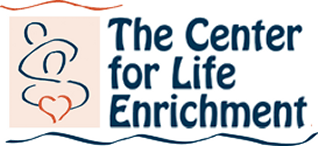By Ana Mulero
TOWSON, Md. (October 2, 2015)—Joined by students in the Project Citizen program at Towson High School on Thursday, Maryland Lt. Gov. Boyd Rutherford and Dr. Jack Smith, the interim state superintendent of schools, launched a statewide student-based public education prevention campaign to combat heroin and opioid addiction.
This public awareness and communications campaign is one of the 10 recommendations the Heroin and Opioid Emergency Task Force, chaired by Rutherford, outlined in an interim report released in August. The task force was created by Gov. Larry Hogan in February to tackle the heroin and opioid epidemic in the state.
The intent of this campaign, which is a joint effort between the Hogan Administration and the Maryland State Department of Education, is to get young people to have open discussions about drug abuse. Its focus is centered on discouraging students from trying heroin and opioids and educating them and their parents on addiction and support services.
As part of this year-long campaign, the Maryland State Department of Education will coordinate with all 24 school systems and other state agencies to produce communication toolkits geared toward discussing the dangers of heroin and opioids with middle and high school students.
Representatives of the Maryland State Department of Education will regularly communicate with teachers, faith-based and community organizations at meetings or via email to provide them with information about heroin and opioids and get their feedback.
Also, the department plans to engage students via social media campaigns and in art and video contests related to heroin and opioid prevention.
“Everything that we talk about in terms of heroin and opioid problems, it all starts with a person using and starting to use,” Rutherford said. “So we feel that just as important as treatment and overdose prevention, probably more important is the prevention aspect. We need to stop the pipeline of new users of heroin and other drugs.”
Each year, students in the Project Citizen program, which is a part of the Law and Public Policy Magnet program at Towson High School, pick a local issue to analyze, come up with potential solutions, and present them to a panel of lawmakers and public officials. Students in this program started working on a heroin prevention program in March.
Mary-Elizabeth White, social studies chairman and ninth grade teacher at Towson High School, brought Project Citizen to the school about eight years ago to teach students how to make change in their community.
“We know that studies show that in order to have democratic citizenry reinforced, they need to be reinforced by public officials that will listen to them and not dismiss them as just being little kids,” White said.
Hannah Weinstein, one of the tenth-grade students who presented Project Citizen’s heroin prevention program for a panel that included Rutherford and Smith at the school’s library said, “Originally it was about marijuana and heroin but since marijuana is less of an issue we decided to stick with heroin as our topic.”
According to a recent report from the state’s Behavioral Health Administration, there were 1,564 heroin-related and 1,101 prescription opioid-related emergency department visits among Maryland residents in 2014. Also, five jurisdictions—Baltimore City and Anne Arundel, Baltimore, Calvert, and Cecil counties—had significantly higher rates in heroin-related visits than the state average.
“It’s a very good program they have and they have some good information that will help us when formulating our final reports,” Rutherford said about the students’ heroin prevention program.
The Maryland State Department of Education is also engaged in three other projects that support the governor’s statewide effort to combat addiction:
They plan to have an earlier and broader incorporation of heroin and opioid prevention in the state’s health curriculum; embed the topic of heroin and opioid awareness, drug abuse and prevention into other subject areas like social sciences; and integrate heroin and opioid addiction prevention into service learning projects for grades 6 to 12.
At the elementary school level, the focus will be on promoting awareness of the dangers of all prescription drugs, and cautioning students about what they may find in household medicine cabinets.
“Schools have an important role to play in educating children about the danger of these drugs,” Smith said. “The best way to reduce drug abuse is to stop it before it begins.”


